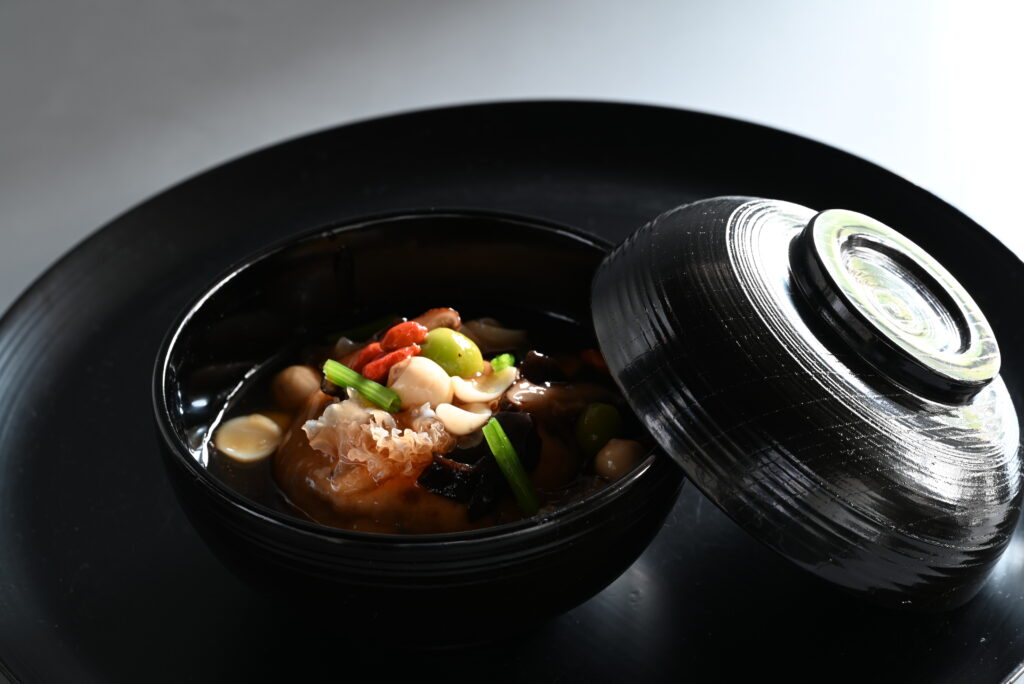2.3 Basic principles: gomi, goshoku, goho

Sachiko: It is fascinating to look at the origins of what then developed as Japanese cuisine throughout the centuries… I think all Japanese, not only professional cooks, have heard of gomi五味, goshoku五色, goho五法. Me too, but I didn’t know that Dogen conceived them eight hundred years ago and lasted so long. It’s amazing. And this is all rooted in Zen.
Gomi = Five flavors: that is exactly the same as it is now.
Goshoku = Five colors: today at schools different foods are still categorized by colors. The categories have changed slightly, but the groundbreaking idea of expressing the nutrients of foodstuffs in color has not changed.
Goho = the five ways to cook: they haven’t changed at all.
Miura explained, “about eight hundred years ago, Dogen wrote an essay called the ‘Tenzo Kyōkun.’ He was a monk at a monastery; a tenzo is a cook. His essay is a guide to the proper way to cook, and up to today, the ‘Tenzo Kyōkun’ is the bible for all Japanese chefs. No document is comparable. The ‘Tenzo Kyōkun’ offers guidelines and has rules that still have meaning for professional cooks in modern Japan. Some of the guidelines are specific to kaiseki dining. (page 168)
Also, regarding how to deal with ingredients, Dogen wrote:
Do not be negligent and careless just because the materials seem plain, and hesitate to work more diligently with materials of superior quality.’” Dogen made it clear that it is necessary to be thoughtful about cooking, to consider what you are doing to ingredients, and whom you are feeding. You must accept that you are part of nature through the food. (page 169)





